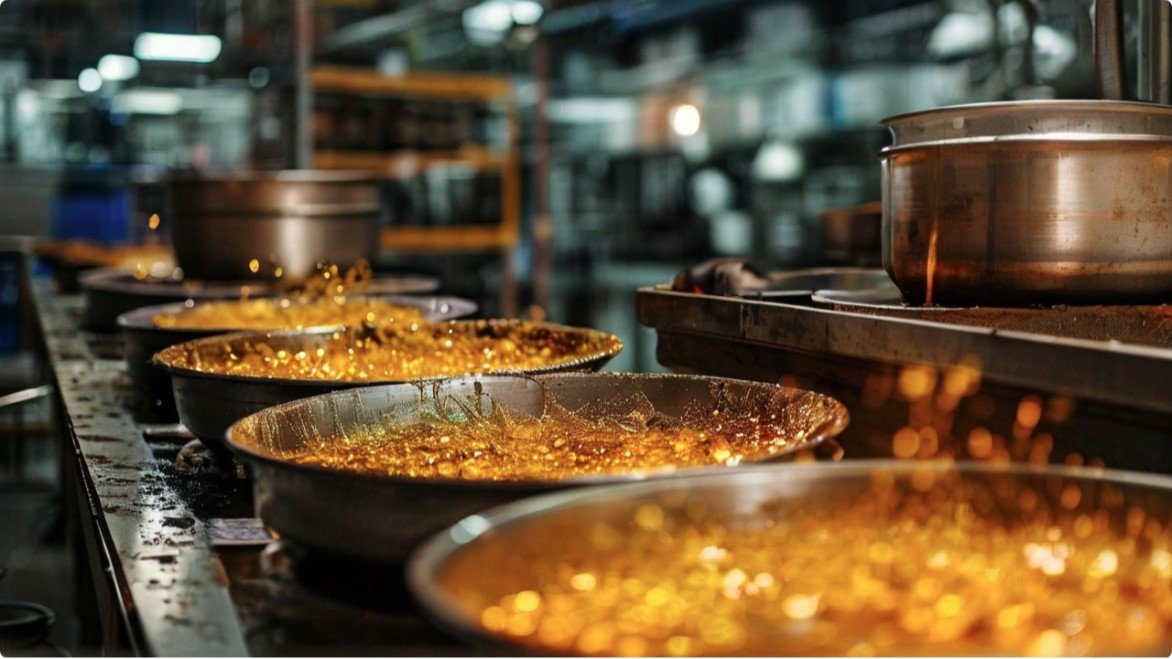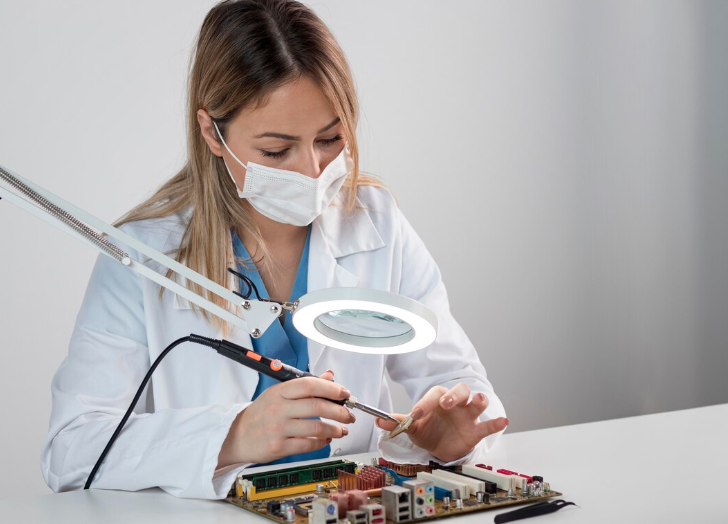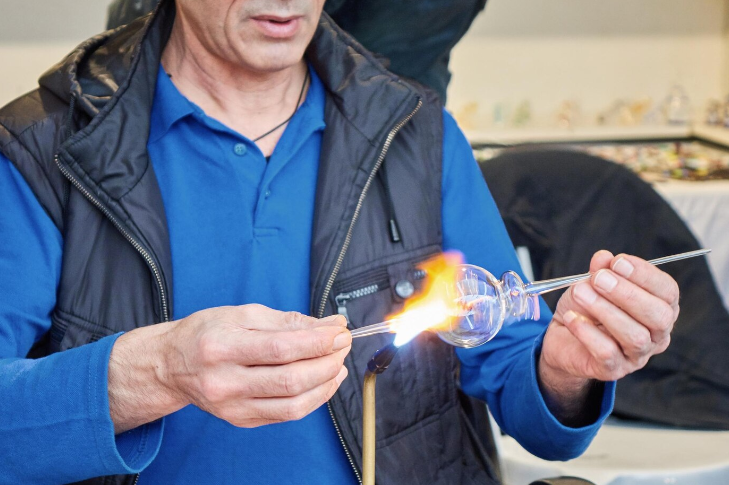Revolutionizing Lithium Battery Anodes with Cu-Sn Alloy Fabrication

Lithium-ion batteries power our modern world, from smartphones to electric vehicles. However, the demand for higher energy density and longer lifespans necessitates continuous advancements in battery technology. Graphite, the current anode material, faces limitations in terms of energy capacity. This has spurred the search for alternative materials, with tin (Sn) emerging as a promising candidate due to its high theoretical capacity.
However, Sn suffers from significant volume expansion during charging and discharging cycles, leading to mechanical stress, cracking, and ultimately, performance degradation. To overcome these challenges, researchers have explored innovative fabrication techniques, and one such breakthrough involves the use of electroless deposition to create high-performance Cu-Sn alloy anodes.
Challenges of Tin as an Anode Material
The primary hurdle in utilizing Sn as an anode material is its substantial volume change during the lithiation process, often exceeding 300%. This drastic expansion exerts immense mechanical stress on the electrode structure, causing it to crack and delaminate from the current collector. This ultimately results in rapid capacity fade and shortened battery lifespan.
Electroless Deposition
Electroless deposition offers a scalable and cost-effective solution to fabricate Cu-Sn alloy anodes. This technique involves a displacement reaction between copper (Cu) and tin, resulting in the formation of a stable alloy with enhanced electrochemical properties. The process typically involves the following steps:
1. Copper Plating on Carbon Cloth: Initially, Cu is electrolessly deposited onto a woven carbon cloth substrate. This step establishes a conductive framework, ensuring efficient electron transport within the electrode.
2. Tin Displacement Reaction: The Cu-plated cloth is then immersed in a tin solution, where a displacement reaction occurs, leading to the formation of a Cu-Sn alloy. This alloy exhibits superior structural stability compared to pure Sn due to the presence of Cu, which helps to mitigate the significant volume changes during cycling.
3. Electrode Fabrication: Finally, the resulting Cu-Sn alloy-coated carbon cloth is assembled into coin cells with lithium metal as the counter electrode for further testing and evaluation.
Advantages of the Woven Fabric Substrate
The use of carbon cloth as a substrate offers several key advantages:
• Conductivity: The woven structure of the carbon cloth ensures seamless electron flow throughout the electrode, maximizing current transfer and minimizing internal resistance.
• Volume Accommodation: The porous nature of the fabric provides space to accommodate the volumetric expansion of Sn during cycling, minimizing the mechanical stress and associated performance degradation.
• Versatility: This approach is not limited to carbon cloth and can be adapted to other substrates, such as graphite particles, offering greater flexibility in anode design and fabrication.
Performance Metrics
The Cu-Sn alloy electrodes fabricated using this method have demonstrated significant performance improvements:
• Open Circuit Voltage (OCV): The OCV typically ranges from 2.02V (pristine carbon cloth) to 3.0V (Cu-Sn plated carbon cloth), indicating a higher potential for energy output.
• Specific Capacity: First-cycle specific discharge capacities have been observed to range from 561 mAh/g to 656 mAh/g, depending on the deposition time and the specific Cu-Sn alloy composition. These values represent a substantial improvement over traditional graphite anode.
• Cycle Life: Long-term cycling tests have revealed stable capacity retention over numerous cycles, highlighting the structural integrity and durability of the Cu-Sn alloy electrodes.
Implications for Graphite Substitution
While graphite remains the industry standard for lithium-ion battery anodes, the Cu-Sn alloy’s high capacity and power density make it a strong contender for applications demanding enhanced energy storage capabilities. Furthermore, the electroless deposition method can be adapted to coat graphite particles, creating hybrid anodes that combine the advantages of both materials. This approach could lead to the development of next-generation batteries with significantly improved performance and energy density.
Tin Whiskers: A Reliability Concern in Modern Electronics
The electronics industry has transitioned towards lead-free materials to comply with environmental regulations. Tin has emerged as a primary replacement for lead in soldering due to its excellent conductivity and wettability. However, this shift has introduced a new challenge: the formation of tin whiskers.
Tin whiskers are microscopic crystalline structures that spontaneously grow from tin-plated surfaces. These whiskers can lead to short circuits and catastrophic failures in electronic devices, posing a significant reliability risk.

Mechanisms of Whisker Formation
Tin whisker growth is primarily driven by internal stresses within the tin layer. Several factors contribute to whisker formation, including:
• Internal Stresses: These stresses arise during the plating process itself, such as those caused by the rapid deposition of tin onto the substrate.
• Mechanical Stresses: External forces, such as bending or vibration, can also induce stresses within the tin layer, promoting whisker growth.
• Temperature Fluctuations: Changes in temperature can accelerate the diffusion of tin atoms within the layer, increasing the likelihood of whisker formation.
• Environmental Factors: High humidity levels can also influence whisker growth by promoting the formation of tin oxide, which can act as a nucleation site for whiskers.
Stress-Whisker Dynamics
Interestingly, research has shown a counterintuitive relationship between stress and whisker growth. Whiskers tend to form in regions of lower stress concentration. This occurs because tin atoms migrate from areas of high stress to areas of lower stress, effectively alleviating localized stress. This complex behavior underscores the difficulty in predicting and preventing whisker formation.
Preventative Strategies
Several strategies are employed to mitigate tin whisker formation:
• Alternative Surface Finishes: Replacing pure tin with alloys such as tin-copper or tin-silver can significantly reduce whisker propensity.
• Stress Minimization: Optimizing plating processes to minimize internal stresses within the tin layer is crucial. This can involve adjusting plating parameters, such as current density and bath composition.
• Environmental Controls: Controlling temperature and humidity within the operational environment can help to minimize whisker growth rates.
• Regular Inspections: Implementing regular visual inspections or automated monitoring systems to detect and address whisker growth early on is essential for maintaining device reliability.
Future Directions
Ongoing research and development are focused on developing more effective strategies to address the tin whisker challenge:
• Novel Coatings: Developing innovative coatings that can inhibit whisker growth while maintaining the desired electrical and mechanical properties.
• Enhanced Testing Protocols: Developing more accurate and reliable testing methods to predict whisker behavior under real-world conditions.
• Stress Analysis Tools: Utilizing advanced modeling and simulation techniques to better understand and predict stress distributions within tin-plated components.
Advancements in Tin-Based Coatings and Electroplating Technologies
Electroplating plays a critical role in enhancing the properties of various materials for a wide range of applications, from aerospace to electronics. Recent advancements in tin-based coatings and electroplating technologies have led to significant improvements in reliability, sustainability, and performance:
• Site-Selective Core/Shell Nanowire Deposition: Nanotechnology enables precise control over material deposition at the nanoscale. A groundbreaking study demonstrated site-selective deposition of tin onto specific segments of multi-segment nanowires. This approach allows for the targeted placement of tin, enabling the creation of complex and highly functional nanostructures for applications in electronics and optoelectronics.
• Green Chemistry in Immersion Tin Plating: Traditional immersion tin plating processes often involve the use of toxic chemicals. However, recent advancements have led to the development of more environmentally friendly plating solutions. For example, the use of choline chloride-based aqueous solutions has shown promise as a sustainable alternative to traditional plating baths. These eco-friendly solutions can significantly reduce the environmental impact of the plating process while still producing high-quality tin coatings.
Advint’s Role in Driving Innovation
Advint Incorporated is a leading provider of electroplating technology and services. With a focus on innovation and sustainability, Advint offers a range of services, including:
• Comprehensive Training Programs: Advint provides comprehensive training programs covering a wide range of electroplating techniques, including immersion tin plating, stress management, and nanotechnology integration.
• State-of-the-Art Equipment: Advint supplies high-frequency rectifiers and other advanced electroplating equipment tailored to meet the specific needs of its customers.
• Sustainability Focus: Advint strongly emphasizes the importance of sustainability and encourages the adoption of eco-friendly electroplating methodologies to minimize environmental impact.
Conclusion
From revolutionizing lithium-ion battery anodes to addressing the challenges of tin whisker formation, the intersection of materials science and electroplating technology continues to drive significant advancements in various fields. By leveraging innovative techniques such as electroless deposition and green chemistry, researchers and engineers can overcome existing limitations and develop more sustainable and high-performance materials.
Companies like Advint play a crucial role in driving this transformation by providing cutting-edge technology, expertise, and training to empower industries to achieve excellence in material performance. As the demand for advanced materials continues to grow, the role of electroplating technology and the companies that drive its evolution will become increasingly important.

Posted By:Venkat Raja
Jan 07, 2025
Tags:




